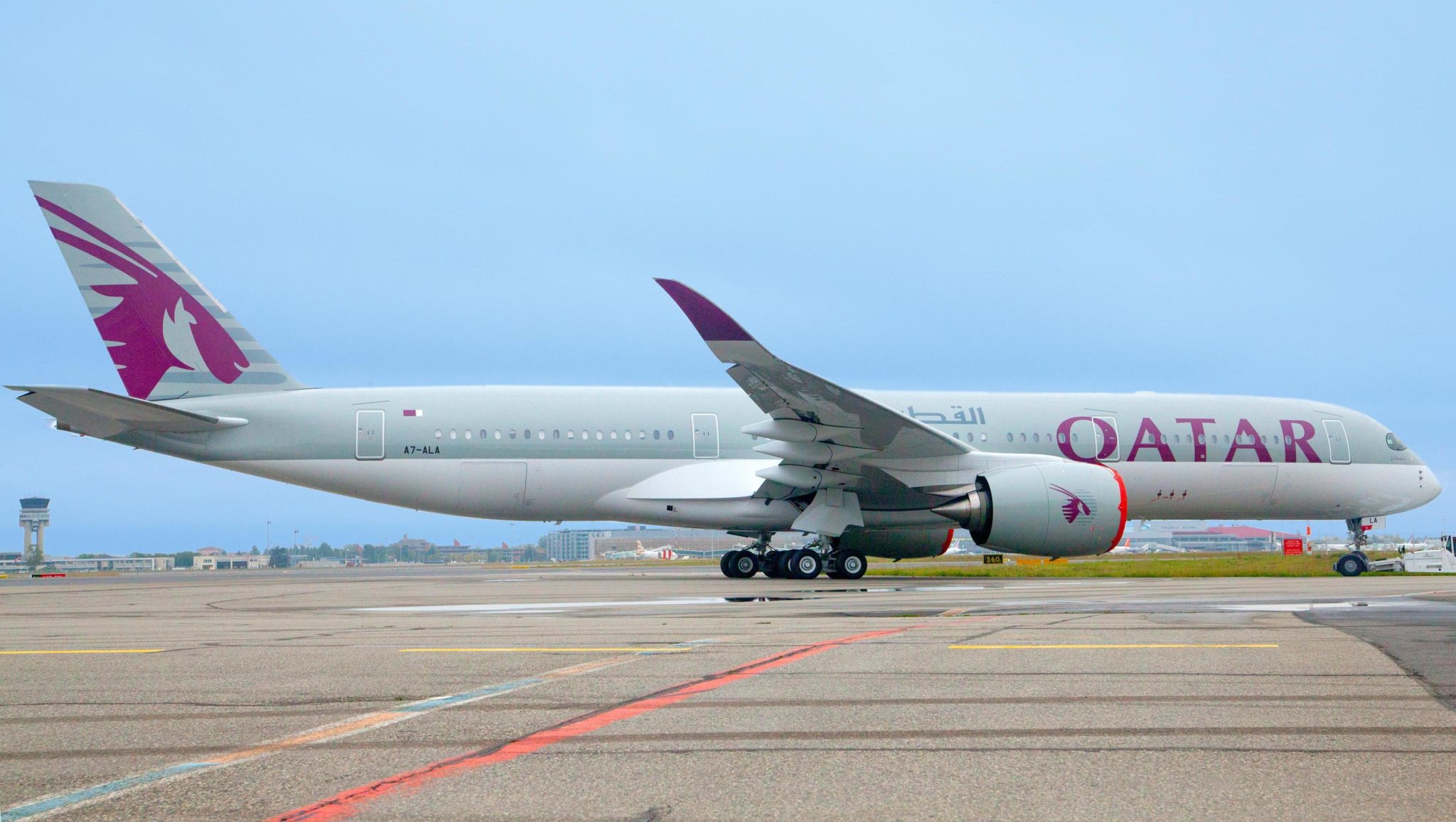Leeham News and Analysis
There's more to real news than a news release.
 Leeham News and Analysis
Leeham News and Analysis
- A350-1000 or 777-9? Part 3 April 25, 2024
- Boeing CEO promises company is turning around…again April 24, 2024
- Solid start for stand-alone GE Aerospace despite cuts to LEAP output April 23, 2024
- SPEEA, Boeing at impasse over safety program, union says April 23, 2024
- Better transparency needed on Boeing’s 1Q earnings call April 22, 2024
New and Derivative Airplanes: Some good, some not: Part 2
Part 2 of two parts.
With multiples and multiples of billions of dollars at stake to develop new airplanes, and the billions of dollars of cost overruns at risk, it’s understandable the Airbus and Boeing are shifting to looking at derivatives and incremental improvements now for the lower-risk and ability to “harvest” technology across family lines.
This is hardly new. Airframers have been doing this since the Douglas DC-1 prototype begot the DC-2, which led to the DC-3. The Douglas DC-4 was the basis for the DC-6 and DC-7, for which there were A, B and C versions. Lockheed revamped the L-049 Constellation through several major upgrades (the -649, 749, 1049 and 1649, with several sub-sub-types in between). Convair created the CV-240 and revised it twice with the CV-340 and 440. The Martin 202 became the 303 (dumped after design issues with the 202) and the 404.
The trend continued into the jet age. Douglas created the DC-8-10/20/30/40/50 on the same basic airframe and really went to town with the DC-8 Super 60 Series. The DC-9-10 became the -20/30/40/50, the Super 80 (in four variants) and the basis for the MD-90 and MD-95. Boeing’s ground-breaking 707-120 became the 138/227/320B/C, the 707-020 (more commonly known as the 720), the C-135/KC-135 and a number of other military variants. The fuselage was the basis of the 727, 737 and 757. And so on. (Text continues below the photo.)

Later this month, we will unveil a new, updated Leeham News and Comment with a combination of paid and free content. Watch this space for more information.
European manufacturers of the early jet age followed the same pattern. There were four commercial versions intended for the deHavilland Comet. The Hawker Siddeley came in multiple versions, as did the British Aircraft Corp. BAC-111.
Posted on October 7, 2014 by Scott Hamilton
New and Derivative airplanes: Some good, some not; Part 1
First of two parts.
Earlier this year, Airbus officials said they will concentrate on improving existing airplanes once the A350 enters service.
Boeing followed by saying it would not take any “moonshots” and develop new airplanes, at least for some indeterminate time.
The sentiment on the part of both companies is understandable if not disappointing for aviation purists who want to see new and innovative airplane models rather than made-over sub-types.
This is one of those cases where both schools of thought are right. (Text continues below photo.)

Later this month, we will unveil a new, updated Leeham News and Comment with a combination of paid and free content. Watch this space for more information.
New airplanes are, to state the obvious, very expensive to develop and in this increasingly technological age and demand for “smarter” airplanes that are more fuel efficient and which try to improve passenger experience while cramming as many revenue-paying passengers into the airplane as possible, becoming more and more challenging. Where it once was possible to bring an airplane to market within four years of launch, today airframers routinely look at seven years and even eight. Even derivative airplanes are now taking six or seven years to enter service from launch.
Posted on October 6, 2014 by Scott Hamilton
Assessing the 70-90 seat regional jet sector
Introduction
Major orders last week for Bombardier and Mitsubishi and the release of the Airbus Global Market Forecast provide an opportunity to look at market segments that don’t get a lot of attention in the shadow of the greater focus on the A320/737 and medium-twin aisle sectors.
These over-shadowed sectors are the 70-99 seat regional jet; the 100-149 seat single-aisle market; and the Very Large Aircraft.
Due to the scope and length of each examination, we will detail these sectors in three parts.
Summary
• Embraer and Mitsubishi will dominate the 70-99 seat sector;
• Embraer and Bombardier will dominate the 100-149 seat sector;
• Airbus and Boeing have largely withdrawn from the 100-149 seat sector;
• Airbus clings to unrealistic 20-year forecast in the VLA sector, but Boeing is a non-player today and in the future.
Part 1: 70-99 Seat Sector
This is a shrinking market for the regional jet as increasing fuel prices make it more and more difficult for regional jets to be economical. Nonetheless, there are several established and new entrant players in the market:
• Bombardier, with the CRJ-700, CRJ-900 and CRJ-1000
• Embraer, with the in-production E-170/175 and E-190/195
• COMAC/AVIC, with the ARJ-21 70 and 90-seat models
• Mitsubishi, with the MRJ-70 and MRJ-90
• Suhkoi, with the SSJ-100
Posted on October 5, 2014 by Scott Hamilton
Aviation conferences this month
There are two aviation conferences in Washington State this month.
The first is from the Pacific Northwest Aerospace Alliance October 8. The PNAA Space & Security conference, a one day event, will be at the Museum of Flight at Boeing Field in Seattle. The conference is quite timely, considering Boeing just announced job transfers out of Puget Sound from its Defense unit. Two local defense programs that remain, the P-8A Poseidon (based on the 737) and the KC-46A (based on the 767) are on the program for updates.
The British American Business Council (Northwest), or BABC, holds a one day Aerospace Conference, also at the Museum of Flight, on October 28. Airbus Americas will discuss the A-Series Neo programs. NASA will discuss future airplanes, with composites, interiors and other materials also on the agenda.
Posted on October 3, 2014 by Scott Hamilton
Odds and Ends: 737 rate hike on cash flow; How the Chicago ATC fire impact unfolded; New PW engine chief
737 rate on on cash flow: The Seattle Times has a good article that described the impact on cash flow the decision by Boeing made to boost 737 production to 52/mo in 2018. The rate hike comes at a time when we believe production rates on the 777 Classic will be bottoming out to perhaps as low as five per month, which of course will negatively affect cash flow at Boeing.
We expect Boeing to further increase production rates of the 737 in 2019. The 777X production will just be in its infancy, with entry-into-service planned for 2020. (Information continues below the picture.)

Later this month, we will unveil a new, updated Leeham News and Comment with a combination of paid and free content. Watch this space for more information.
The decline in production rate of the 777 Classic, which we think will happen in 2017 and a like rate reduction for the 747-8, which we believe will occur as early as 2016, represents the reason why Wall Street analysts are turning more and more bearish on Boeing stock.
Posted on October 3, 2014 by Scott Hamilton
Qatar Airways first A350-900 visible with official photo
Airbus today publicized the first official photo of a customer A350-900, just two days after its certification. It is Qatar Airways first A350-900, production number MSN006, which is towed between the different finishing stations at Toulouse.
What is left to do is finishing off the interior, then ground tests and flight tests. The finishing of the interior to Qatar’s standards can be a painstaking process, especially as this is the first time that their interior (which surly has several items which you don’t find in Airbus normal A350 interior catalog) is build together in the aircraft.
Fitting a customer interior for the first time is something which is time-consuming as one is at the same time collecting every bit of feedback for possible adjustments of the fittings, seats etc for later builds. Making it for Qatar makes this even more delicate, they are perfectionists when it comes to the interior finish. Parts that don’t fit perfectly or have surface faults will be removed and go into an adjustment process, everything being painstakingly documented to quickly come down the learning curve. We can be sure Airbus and Qatar’s interior teams and B/E Aerospace (who as far as we know makes the premium seats) are working long days in the weeks ahead (and has done so for some time). The interior of MSN005, the rout proving aircraft with a standard Airbus catalog interior, took two and a half months in the interior stations, this aircraft has been in these stations for different interior fittings since May and will continue for some further weeks.
Production sequence
Qatar will receive the first eight A350 off the production line with production numbers MSN006 to MSN013. One can expect the first batch of eight Qatar A350 to have been delivered before third quarter next year. Then follows Vietnam Airlines with four aircraft and then Finnair with three. This time next year we should have seen Singapore Airlines livery as well and if things are running well Cathay Pacific’s.
By Leeham Co EU
Posted on October 2, 2014 by Bjorn Fehrm
Odds and Ends: Coming soon–new Leeham News; Boeing v SPEEA; 86-seat Q400; Boeing 326; Budapest Air Show
Coming soon: We will be rolling out changes this month to Leeham News and Comment. We will expand our News and Analysis, providing the most insightful commentary of aviation issues of any on-line publication. Most on-line news resources either collate into one portal news from around the world, or report news without analysis, or offer superficial analysis. We’re famous (or infamous, depending on your viewpoint) for providing insight in a no-BS manner.
We often report the news before anyone else, and we spot market trends long before others.
For example:
- We concluded in December 2013 that Airbus had to launch the A330neo program, at a time when other on-line publications were still muddling along and even Airbus hadn’t reached its conclusion.
- We were the first to report that Airbus revamped its A350-1000, ahead of the company’s own announcement and before any other media tumbled to the development.
- We’ve been the leading publication to focus on LOPA (Layout Of Passenger Accommodations) and IAC (Integrated Airplane Configuration) when comparing Airbus and Boeing airplanes at a time when other publications didn’t even know the terms.
- Our aircraft economic analysis has the advantage of aerospace engineering background to take into account detailed understanding of aerodynamic improvements, down to the last percentage point.
These changes include transformation into a combination paid and free content site. We’ll have paid content several times a week in addition to our free content.
Posted on September 30, 2014 by Scott Hamilton
Airbus, Boeing, Bombardier, IAM 751, International Association of Machinists, Leeham News and Comment, SPEEA
777 Classic, 777X, A330neo, A350-1000, Boeing, Boeing 314, Boeing 326, Bombardier, Budapest Air Show, IAM 751, International Association of Machinists, Leeham News and Comment, Q400, Q400 Combi, SPEEA
A350 certified; we provide a comprehensive program review
Airbus’ most recent all-new aircraft, the A350 has achieved civil airline airworthiness certification from EASA today September 30, FAA certification will follow. It marks an end to an eight year program to develop an all-new airliner in the 250-350 passenger segment. It also creates a point where a review of this last (for quite a while) big aircraft program is called for.
Below we go through all the aspects of the A350, not only program and technical aspects but also organizational, economical and market communication aspects. In all those dimensions it was the big step forward. Read more
Posted on September 30, 2014 by Bjorn Fehrm
Air Berlin 787 cancellation potentially gives Boeing big advantage in Delta order competition
The announcement last week that AirBerlin canceled orders for 15 Boeing 787s gives Boeing an unexpected, big advantage in the contest for a big wide-body order from Delta Air Lines–depending on when Delta wants the airplanes.
The competition apparently has been narrowed to the Airbus A350-900 and the Boeing 787-9, according to Flight Global. Based on this article, the Airbus A330-900 neo has been eliminated, which if true is a blow to the fledgling program in which Airbus had counted on Delta to be a launch customer.
Outside of the OEMs and Delta, it’s not known when Delta wants 50 widebodies. But the A350 and 787 are essentially sold out through the end of the decade, though both OEMs can typically find delivery slots for important campaigns such as this one by over-booking or persuading other customers to move their delivery positions.
Airbus has plenty of slots for the A330neo from 4Q2017, when entry-into-service is planned. But with the apparent elimination of the A330neo from the competition, delivery schedule becomes important–and the AirBerlin cancellation works to Boeing’s advantage.
Posted on September 29, 2014 by Scott Hamilton
Email Subscription
Twitter Updates
My TweetsAssociations
Aviation News-Commercial
Commentaries
Companies-Defense
Resources
YouTube
Archives
- April 2024
- March 2024
- February 2024
- January 2024
- December 2023
- November 2023
- October 2023
- September 2023
- August 2023
- July 2023
- June 2023
- May 2023
- April 2023
- March 2023
- February 2023
- January 2023
- December 2022
- November 2022
- October 2022
- September 2022
- August 2022
- July 2022
- June 2022
- May 2022
- April 2022
- March 2022
- February 2022
- January 2022
- December 2021
- November 2021
- October 2021
- September 2021
- August 2021
- July 2021
- June 2021
- May 2021
- April 2021
- March 2021
- February 2021
- January 2021
- December 2020
- November 2020
- October 2020
- September 2020
- August 2020
- July 2020
- June 2020
- May 2020
- April 2020
- March 2020
- February 2020
- January 2020
- December 2019
- November 2019
- October 2019
- September 2019
- August 2019
- July 2019
- June 2019
- May 2019
- April 2019
- March 2019
- February 2019
- January 2019
- December 2018
- November 2018
- October 2018
- September 2018
- August 2018
- July 2018
- June 2018
- May 2018
- April 2018
- March 2018
- February 2018
- January 2018
- December 2017
- November 2017
- October 2017
- September 2017
- August 2017
- July 2017
- June 2017
- May 2017
- April 2017
- March 2017
- February 2017
- January 2017
- December 2016
- November 2016
- October 2016
- September 2016
- August 2016
- July 2016
- June 2016
- May 2016
- April 2016
- March 2016
- February 2016
- January 2016
- December 2015
- November 2015
- October 2015
- September 2015
- August 2015
- July 2015
- June 2015
- May 2015
- April 2015
- March 2015
- February 2015
- January 2015
- December 2014
- November 2014
- October 2014
- September 2014
- August 2014
- July 2014
- June 2014
- May 2014
- April 2014
- March 2014
- February 2014
- January 2014
- December 2013
- November 2013
- October 2013
- September 2013
- August 2013
- July 2013
- June 2013
- May 2013
- April 2013
- March 2013
- February 2013
- January 2013
- December 2012
- November 2012
- October 2012
- September 2012
- August 2012
- July 2012
- June 2012
- May 2012
- April 2012
- March 2012
- February 2012
- January 2012
- December 2011
- November 2011
- October 2011
- September 2011
- August 2011
- July 2011
- June 2011
- May 2011
- April 2011
- March 2011
- February 2011
- January 2011
- December 2010
- November 2010
- October 2010
- September 2010
- August 2010
- July 2010
- June 2010
- May 2010
- April 2010
- March 2010
- February 2010
- January 2010
- December 2009
- November 2009
- October 2009
- September 2009
- August 2009
- July 2009
- June 2009
- May 2009
- April 2009
- March 2009
- February 2009
- January 2009
- December 2008
- November 2008
- October 2008
- September 2008
- August 2008
- July 2008
- June 2008
- May 2008
- April 2008
- March 2008
- February 2008





Odds and Ends: Boeing firms 52/mo for 737; Product strategy; Aircraft demand and production rates
Boeing firms 52/mo for 737: Boeing this morning announced what we reported in June 2013: that it will go to a production rate of 52/mo for the 737 in 2018. This will not be the last rate increase for the 737.
Airbus previously notified suppliers to be prepared for a rate of 54/mo in 2018 for the A320, which we reported some time ago.
Product strategy: In the continuing tit-for-tat in product strategy debate between Airbus and Boeing, often show slides representing their view of how their products line up vs The Other Guy. We’ve often criticized Boeing for taking liberties with how it views Airbus seat; for example, Boeing assigned fewer than 350 seats to the A350-1000, while Airbus now promotes the airplane as having 369 seats in a J/Y class configuration. Boeing assigns 467 seats to its 747-8I while Airbus to now viewed the 747-8 at 405 seats, a figure we generally use in our analysis to represent typical airline configuration.
Airbus recently showed the following slide presenting its current view of the product line up.
Read more
12 Comments
Posted on October 2, 2014 by Scott Hamilton
Airbus, Boeing, Leeham News and Comment
737, 747-8I, 777-300ER, 777X, A320, A350, A380, Airbus, Boeing, UBS